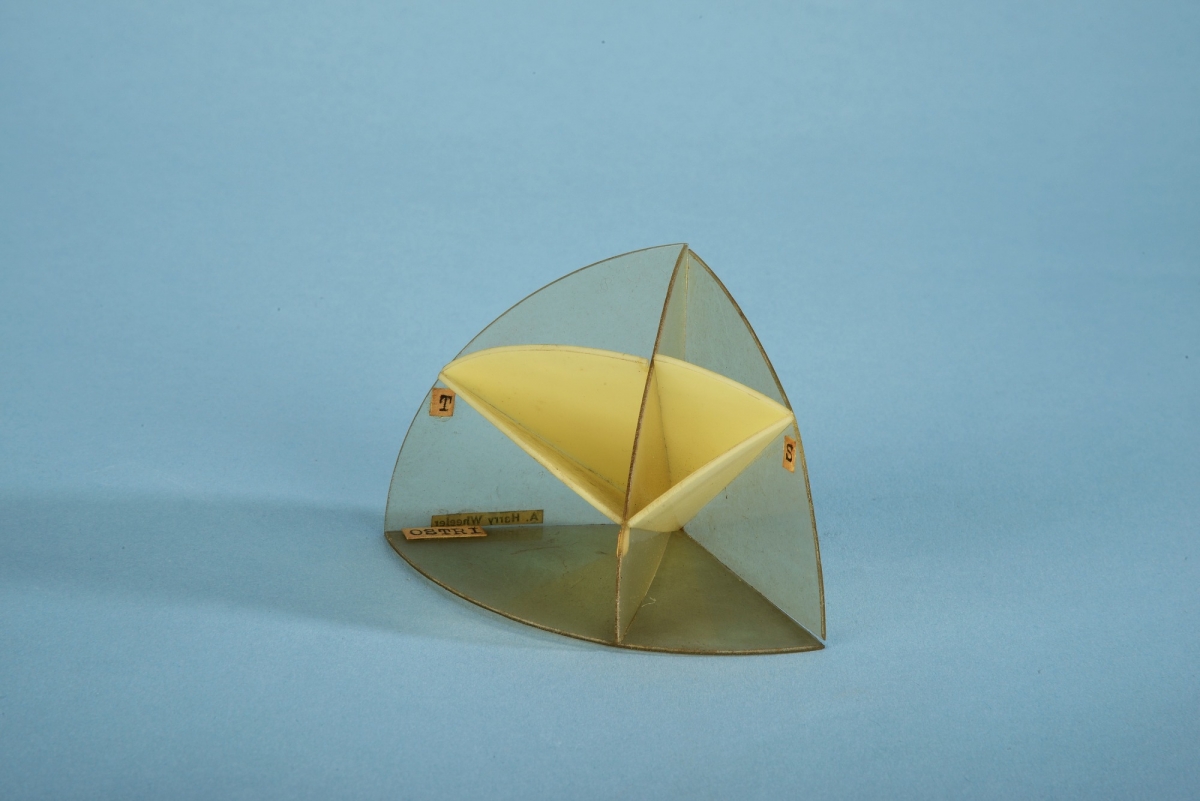- About MAA
- Membership
- MAA Publications
- Periodicals
- Blogs
- MAA Book Series
- MAA Press (an imprint of the AMS)
- MAA Notes
- MAA Reviews
- Mathematical Communication
- Information for Libraries
- Author Resources
- Advertise with MAA
- Meetings
- Competitions
- Programs
- Communities
- MAA Sections
- SIGMAA
- MAA Connect
- Students
- MAA Awards
- Awards Booklets
- Writing Awards
- Teaching Awards
- Service Awards
- Research Awards
- Lecture Awards
- Putnam Competition Individual and Team Winners
- D. E. Shaw Group AMC 8 Awards & Certificates
- Maryam Mirzakhani AMC 10 A Awards & Certificates
- Two Sigma AMC 10 B Awards & Certificates
- Jane Street AMC 12 A Awards & Certificates
- Akamai AMC 12 B Awards & Certificates
- High School Teachers
- News
You are here
Mathematical Treasure: Model of Oblique Spherical Triangle on the Earth’s Surface

Wheeler’s model of a spherical triangle, 1945, Smithsonian Institution negative number NMAH-DOR2015-00457
Mathematical people from ancient astronomers to modern navigators have calculated the arc lengths and angles of triangles on a sphere. Some used special globes and instruments to teach the subject. Massachusetts high school teacher A. Harry Wheeler (1873–1950), who made hundreds of models of polyhedra and other mathematical surfaces, made models for spherical trigonometry that can be dated from 1915 to 1945. He was particularly interested in the topic during World War II, when he taught mathematics at Clark University for the U.S. Army. This 1945 model shows four quadrants of the celestial globe. One represents the equator. The other three parts are perpendicular to the equator through the pole. One passes through point labeled T (Tokyo), another through point H (Honolulu), and the third through point S (San Francisco). A trihedral angle made from pieces of white plastic is bounded by the spherical triangle joining the three points. Several of Wheeler’s models for spherical trigonometry, as well as other instruments related to the subject, can be seen at https://americanhistory.si.edu/collections/object-groups/trigonometry-on-the-sphere.
Peggy Aldrich Kidwell (National Museum of American History, Smithsonian Institution), "Mathematical Treasure: Model of Oblique Spherical Triangle on the Earth’s Surface," Convergence (September 2021)




